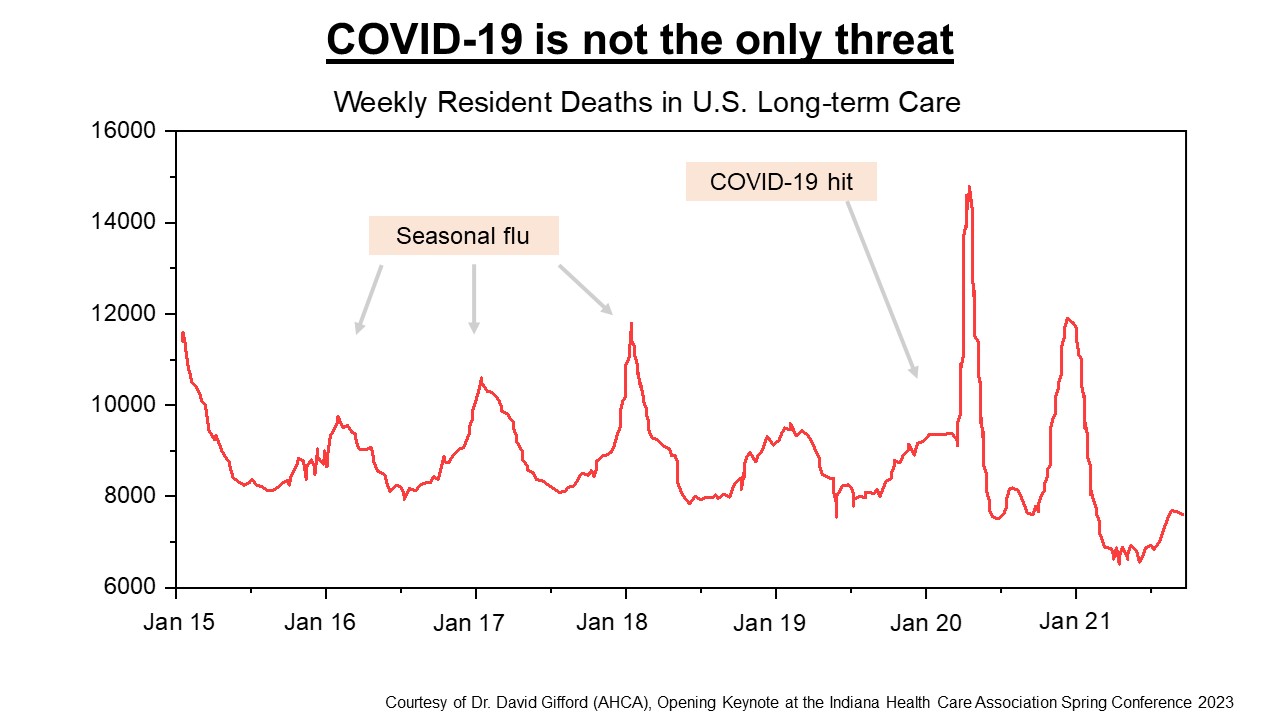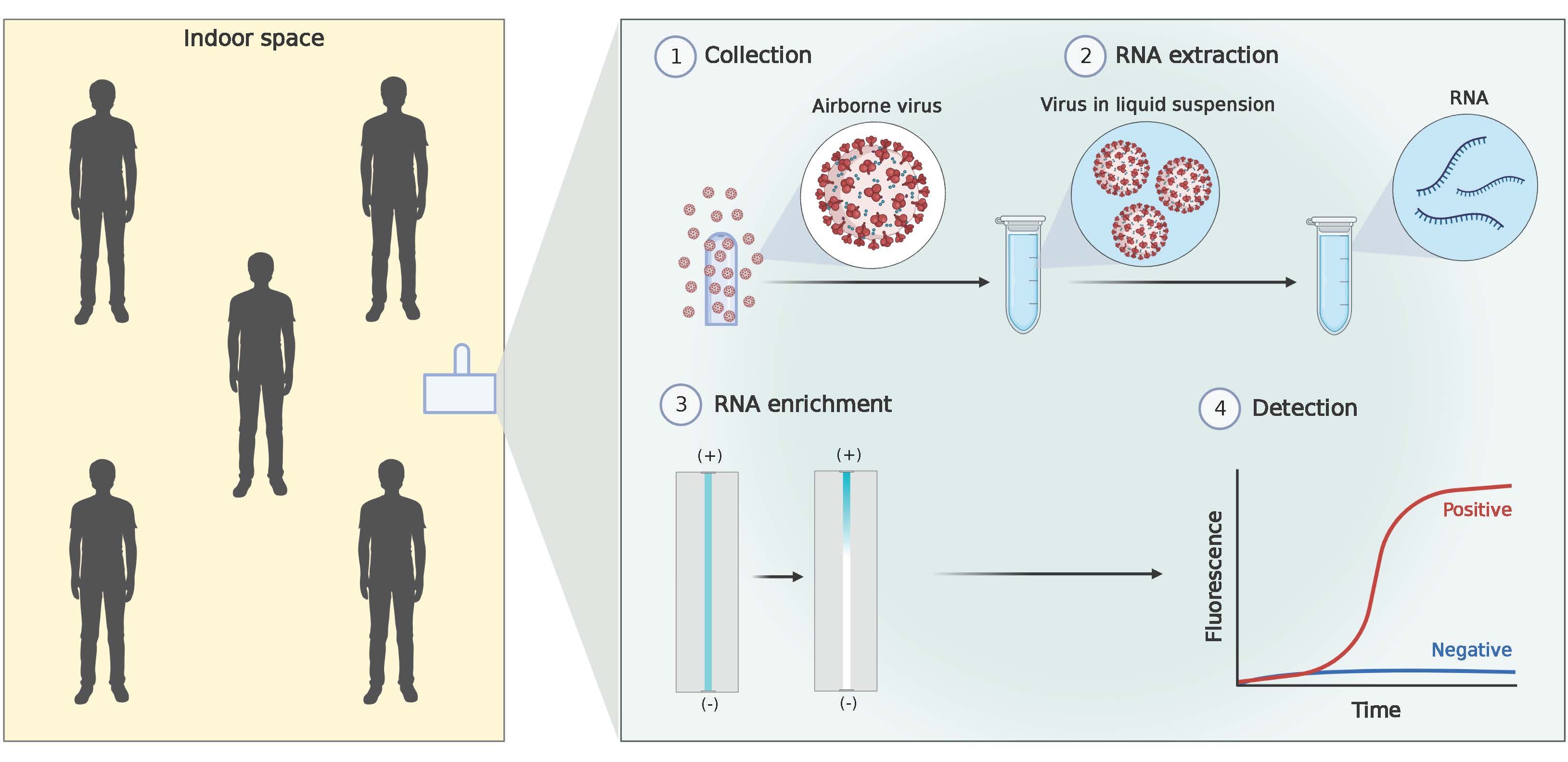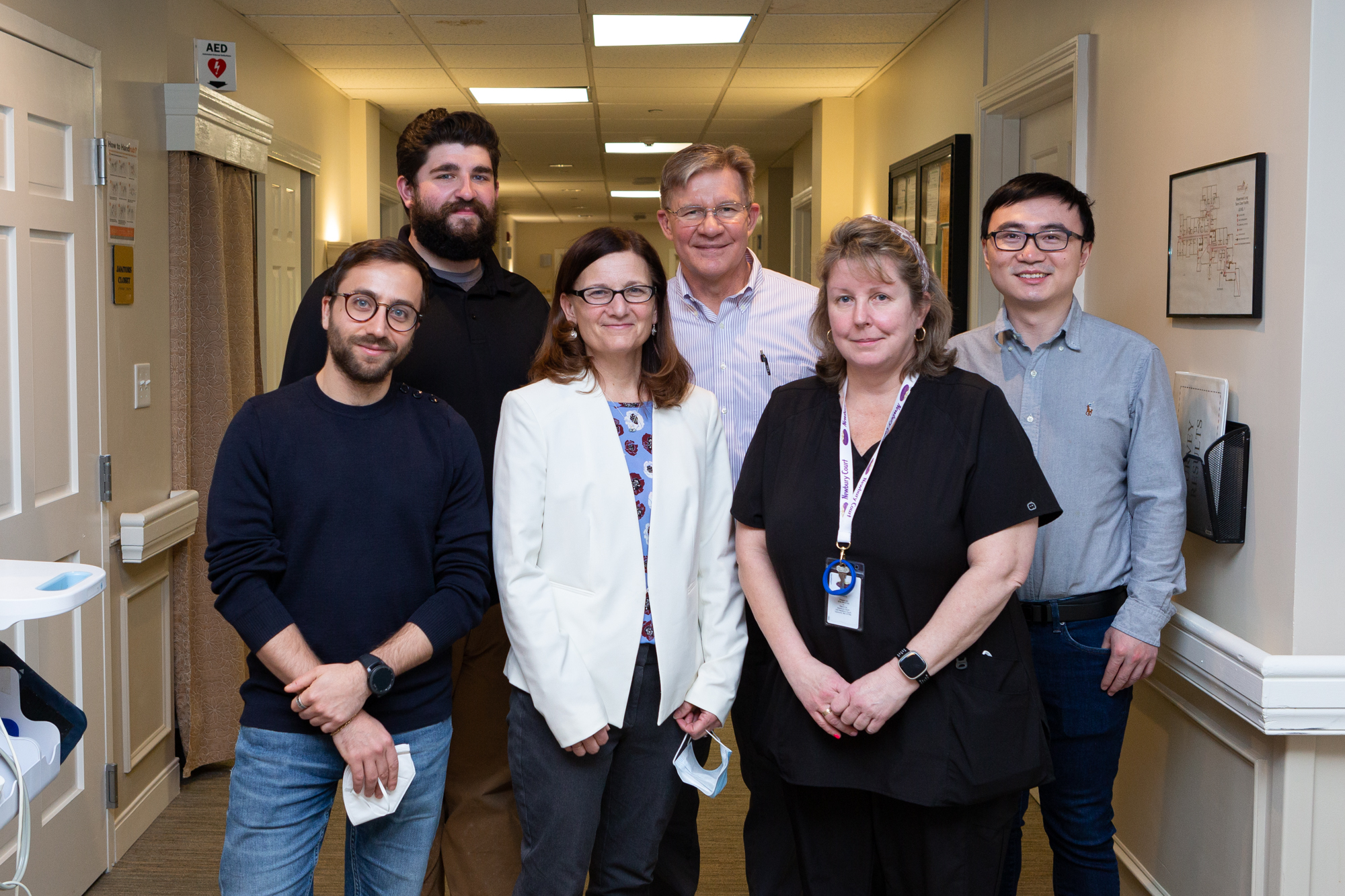Airborne Pathogen Detection
Epidemic preparedness
The older population (85+) in the United States is expected to more than double from 6.7 to 14.4 million by 2040. Even before COVID-19, weekly death counts in long-term care facilities could spike by up to 5,000 during seasonal flu outbreaks. Our recent participation in the NSF National I-Corps program revealed the urgent need for rapid on-site, airborne pathogen detection for preemptive action against air-transmissible infectious diseases, well before contagious individuals show symptoms. This applies both to future pandemics and to endemic viral diseases, such as influenza and COVID-19, which hit vulnerable populations yearly with severe consequences. The ultra-low concentrations of virus in the air make airborne virus detection difficult, yet readily infect individuals.

Residents weekly deaths in long-term care in the United States. Image courtesy of Dr. David Gifford of American Health Care Association.
We characterized a fieldable biosensing process that incorporates a fast RNA enrichment step in order to concentrate viral RNA in a small volume prior to RT-qPCR. Our process was integrated with pathogen collection using a compact, inexpensive, ESP air sampler, as a stand-alone system for early detection of airborne pathogens. To extract the viral RNA, we implemented a simple heat-extraction protocol to circumvent the need for commercial extraction kits, overall making the platform field-ready and relatively inexpensive. Following heat extraction, we developed and characterized an enrichment system which uses small channel electrophoresis against a semipermeable membrane. This system is able to concentrate RNA by nearly 5-fold in just 10 minutes. We designed this process to be simple, inexpensive, and fieldable, thus making continuous monitoring in low-resource settings viable. (Du et al., 2024)

Graphical abstract of the fieldable biosensing process.
To refine our value proposition and bridge the gaps between research and practical considerations, we participated in the National Science Foundation Innovation Corps program. During the six-week period, we conducted over 110 interviews with long-term care facilities administrations, residents, infection control staff, doctors, epidemiologists, advocacy groups, technology start-up founders and academic researchers. We made site-visits to the nursing homes and assisted living communities in different states. With the objectives to better understand the day-to-day activities in these healthcare facilities, we learnt about their COVID-19 pandemic experiences, infection prevention practices, facility management and the primary concerns of employees as well as residents.

MIT Team Visit to Newbury Court in Concord, Massachusetts on Apr 12th, 2023.
References
2024
- A fieldable process for sensitive detection of airborne viruses via electrophoresis-based RNA enrichmentBiosensors and Bioelectronics: X, 2024